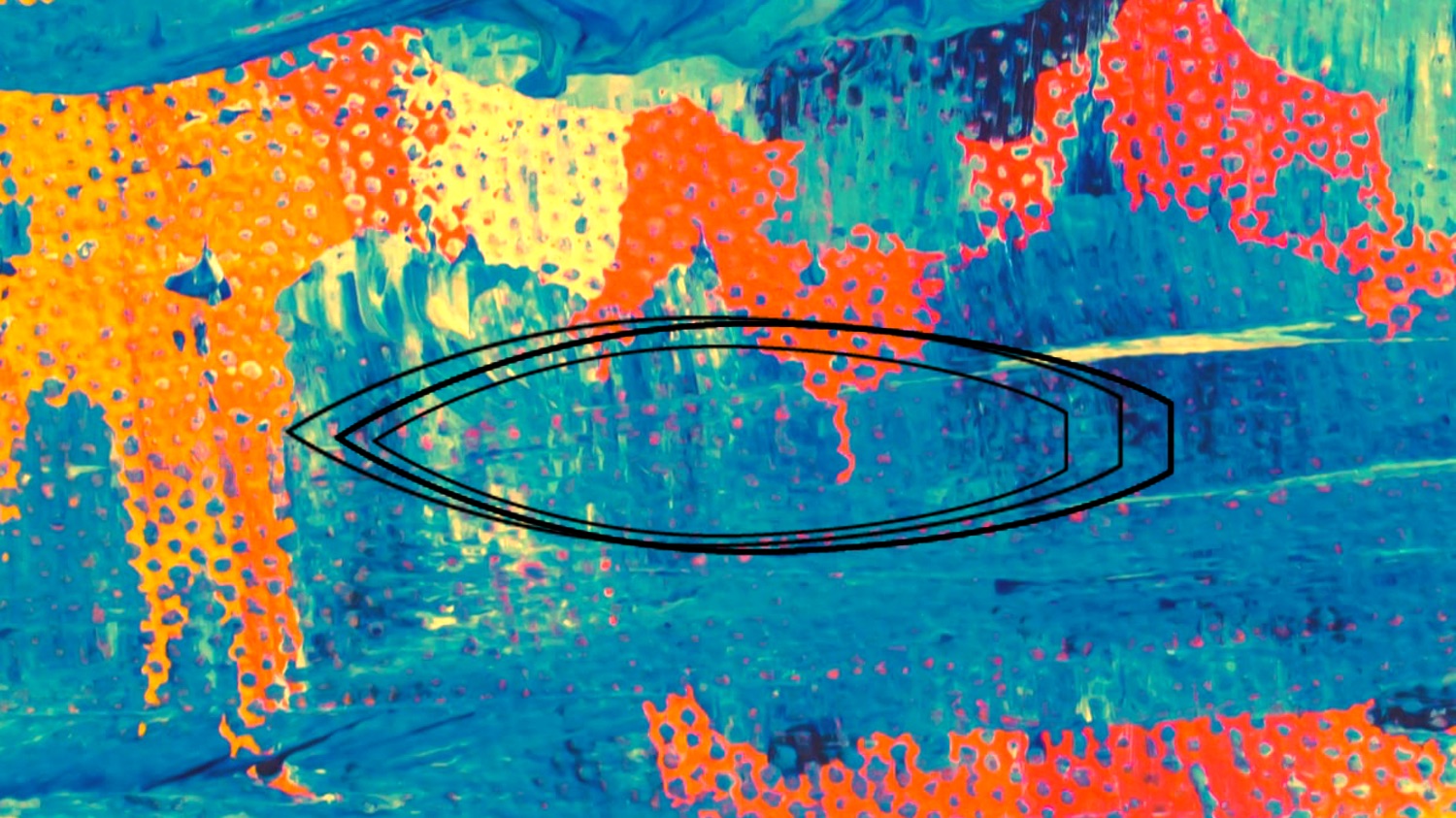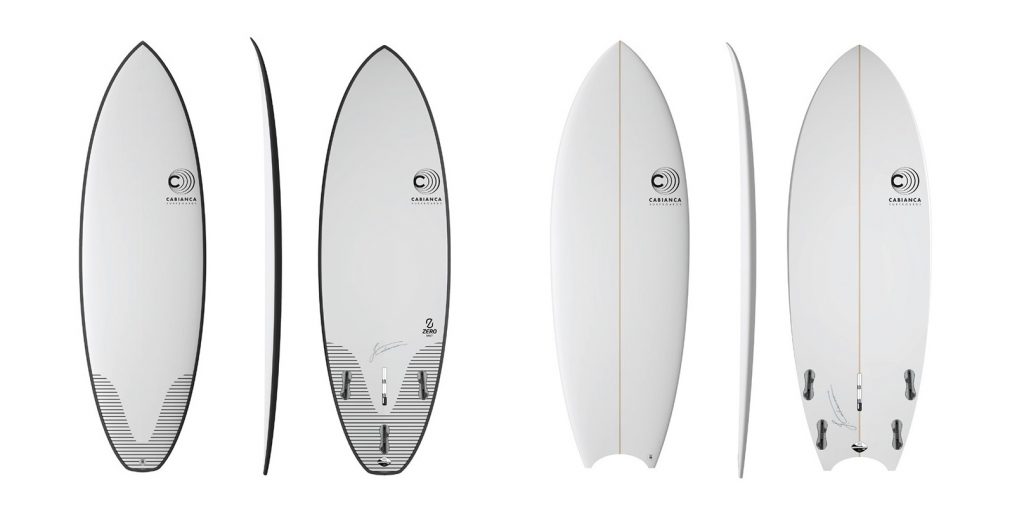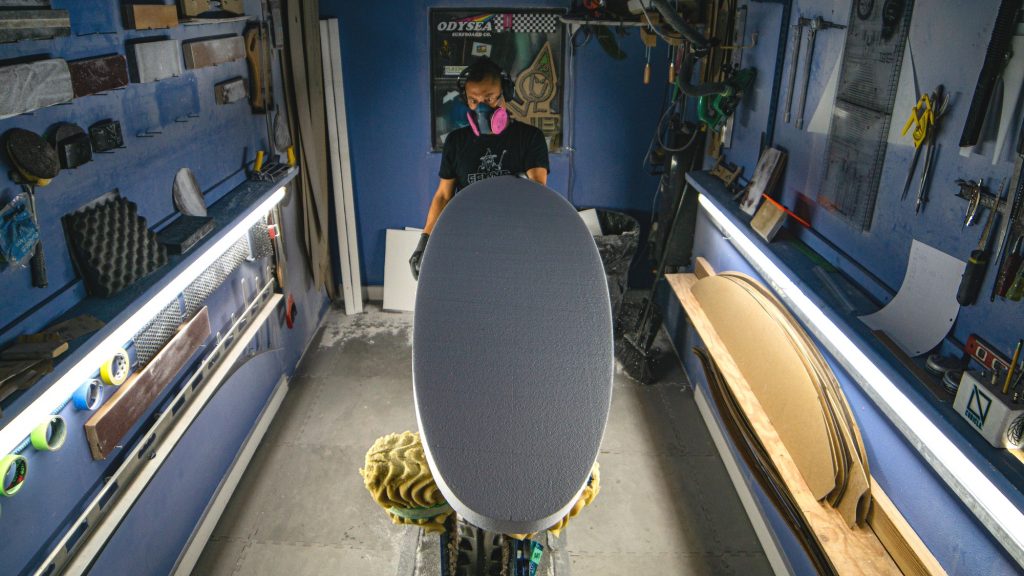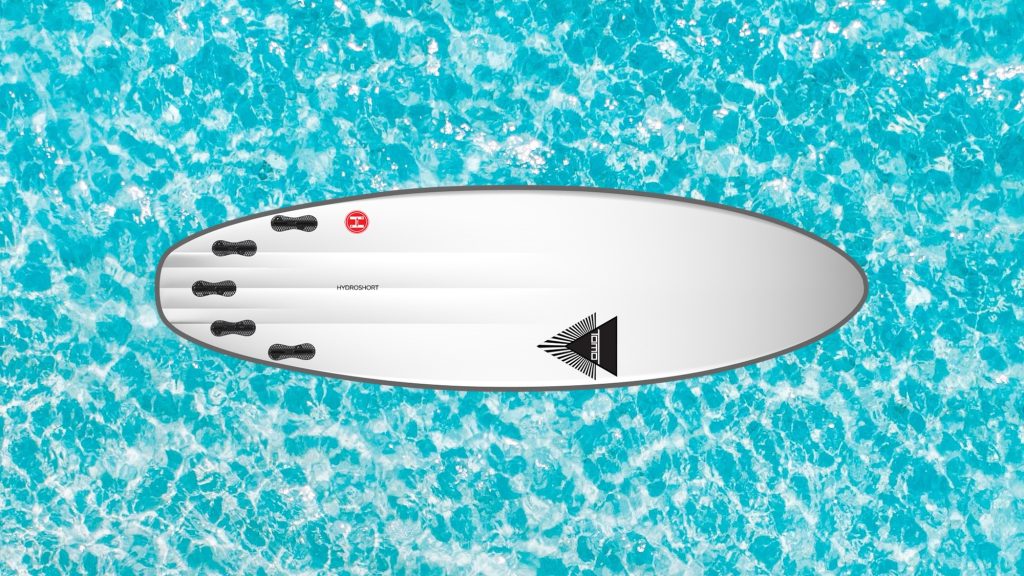Design Basics: Separating standing wave and moving wave surfboards

What is the difference between a surfboard designed for standing waves and one made for moving waves? At a glance, the standing wave variety looks like hobbit-sized sticks, squished-down versions of high-performance shortboards. We know that shapers build finely-tuned boards suited to the different wave pools of the world like Kelly Slater’s Surf Ranch or BSR in Waco. There are also several designs made for standing-wave pools like Citywave and UNIT.
WavePoolMag spoke with three shapers to paint out the differences in broad strokes between static and soliton (moving) wave needs. Below we’ve trimmed the top key takeaways in design differences so readers can choose a suitable stick should they jump from a Wavegarden Cove session in Bristol, to a Citywave session at the Jochen Schweizer Arena in Munich.
German surfing royalty Quirin Rohleder is a fixture at the Eisbach river wave. He also spearheaded the Rapid Surf League tour and the Mighty Otter Surfboards brand. These two enterprises, sprung from standing waves both natural and artificial, celebrate the differences and similarities in the two surfing platforms. When not enjoying standing wave pools in Langenfeld or Milan, Rohleder seeks out the world’s best ocean waves. He says the main difference between a standing wave surfboard and a moving wave surfboard is its length.
“Rapid shortboards would be mostly too small for the ocean,” says Quirin Rohleder. “In the ocean, I’m surfing a 6’1”, and at the river a 5’8”. A normal 5’8” shortboard shape would be too small for me in the saltwater. But it really depends on the type of board. I surf twin fins and mini-Simmons style boards of the same size at the river and in the ocean. In general, you can say that people are looking more and more at different shapes on rapids as well.”
These small “alt-craft” boards can pull double duty in both standing and moving waves, but the high-performance craft favored for shralp fests and competition don’t transition as well between the two different types of waves. (Occasionally they do, but more on that later…)
Basque Country Surfboards shaper Johnny Cabianca who shaped the winning plank under Gabriel Medina’s last two Freshwater Pro wins offers a line of boards dedicated specifically to standing wave pools.

His company recently launched both wake surfing and standing wave models. The Zero Salt uses a unique bottom contour and fin setup to work in stationary waves and differs from ocean craft with toned down rails and lower overall volume.
“We make models for inland surfing, static waves, and wake surfing because these waves are really different,” said Cabianca. “For the wave pools, of course, there are different pools with different waves, but “normal surfboards“ work perfectly. No need to create extra models.”
A big difference in design is the adjustments made for paddling or lack of it. In soliton wave pools you still have to paddle fast enough to takeoff on a moving wave. Most standing waves only require an acid drop or step off to get into. Without the extra foam to facilitate paddling, standing wave boards can go shorter and smaller and more performance-oriented.
But it’s not quite that easy. Just as shapers like Matt Biolos craft different customs for the world’s different wave pools, within stationary waves there are also many differences in design. Oregon surfer Travis Yamada grew up skating, snowboarding and wake surfing in Northern California. He has fine-tuned the difference in board designs within each wave medium.
“There is variation in river waves, just like there is in the ocean,” said Yamada who runs the Cubicle Surf label. “Therefore, river surfboards vary not only for the size and ability of the surfer, but also the type of wave. Bend and Boise have clean little pockety waves that small refined boards work well on, but those boards won’t work well on other river waves.”
To illustrate, Yamada points out the difference in the world’s two most famous standing waves – both in Germany.
“The Eisbach and Citywaves don’t have the trough at the bottom of the waves that Bend and Boise have. The troughs are nose catchers and one of the reasons boards are shaped so short for Bend and Boise. On average the Eisbach boards are five inches longer without any disadvantages of fitting in the wave.”

Yamada says that surfboards shaped for moving waves are the starting point for all these offshoot designs.
“I draw most of my influence and inspiration from what’s been proven and refined in the ocean. It’s taking the curves and contours and scaling them down. Sounds easy, but it can be incredibly challenging to get curves and lines to flow in a sub-five-foot length.”
Sometimes the influence from moving wave to stationary wave design is not so fastidiously mapped out. Occasionally there are “happy accidents.” Legacy surfboard brand Firewire has worked with Australian shaper Daniel “Tomo” Thomson for years. His Hydroshort design was built specifically for the ocean and goes well at wave pools like Kelly’s. Inadvertently the team discovered that the design works amazingly well in stationary waves too.
Built for performance in small to medium moving waves, the board’s torpedo nose helps prevent the design from catching in the trough of a standing wave – as Yamada mentioned. The board also uses a quad inside single concave feature unique to Tomo designs. The bottom counter designed for planning speed in the ocean also works well when gliding over a rapidly moving stream of water.
While boards like the Hyrdonaut, and some alt-craft like a mini-Simmons are inadvertently suited for both moving and stationary waves, at other times you’ll want designs dedicated to a specific type of wave. It’s all up to you and the sensation you’re looking for.
Yamada reminds us to not overthink it and that surfing is simply finding fun on whatever is available to us. It was this search for thrills that kicked off the rapid surfing movement.
“When I moved to Bend in the early ‘90s there was “riverboarding” which was just a piece of plywood tied off to a tree. A handle was attached to the front of the board and you would drift on the piece of plywood out into the current and it would plane out, allowing you to lean back holding the rope standing. Looking back on it, it was pretty obscure.”

Main image by Daniel Salgado
Related Coverage
